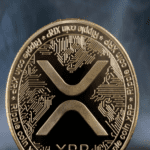How Web3 Amplifies The Creator Economy With On-Chain Ownership How One Post Changed Everything And Creator Economy Got A Dual Twist
That’s how we all feel, right? The social platforms got larger, the audiences got more confused, but creators’ pay was smaller and smaller.Web2 built the names, but not the ownership. Web3 came with blockchain receipts, token-gated everything and a question “So if your content was yours instead to own have?”That’s more than just a tech shift, it’s an overturn of power.Web3 is changing the creator economy from “renting space on platforms” to “own your patch of the internet,” whereby creators can earn directly, get all the royalties and even turn fans into co-owners.To make this a living reality, we’ll need a story.A Web3 Story: Maya’s One Brave Upload, For five years Maya had been a digital illustrator posting on Web2 platforms. Her reels did numbers, threads got engagement but the payouts? Tiny. Algorithms changed, brand deals slowed and her audience was not owned platforms basically leased-then she heard of Web3 creator platforms where everyone is your friend, decentralized graphs like Lens and Farcaster that you own.
So she dared to try something. Instead of setting her new artwork on a Web2 feed, she made it a rare and valuable post on some Web3 social protocol. She set the minimum to mint at a small price. Total collectors would get no more than her willingness to negotiate at private art fairs. “Collect this,” she wrote in the description, “and get access to my private behind-the-scenes video + have the chance to help me pick my next piece.” Of her most loyal fans, 42 people collected it to an ear-popping roar. No longer was it just the art they were buying, but they felt they are involved now. Her content didn’t just get likes. It got on-chain. This is where the Web3 creator economy is at.
EXACTLY what is the Web3 Creator Economy? At its core, the Web3 creator economy is the evolution of our current creator ecosystem: YouTubers, streamers, writers, musicians, meme lords. But this time powered by blockchain. It’s not about putting all your trust in one platform who could make life hard if they wanted. Creators do not rely on centralized platforms to distribute and monetize their content. Instead, they use decentralized protocols, social tokens, DAOs, and of course NFTs to earn their income. More importantly, they manage their coin or ownership through these means; this is the “read write own ” Internet. It’s where the balance of power lies. In Web2, the platform has the audience.
As Steve Weiss said himself: “That’s not just smoke and mirrors. Lens and Farcaster means the fans you have are your own fans.” If a new social graph starts on that pre-existing framework of distributed accounts and avatars, your audience will remain. This is not dissimilar to keeping your subscribers when moving from YouTube to an entirely both video distribution platform only makes software without any sound features. They’re sticking around! Shakespeare said Wert-owndentityttyourwell-pfe. That is not rent clearer to you English is right there. Uber-alles. Why web2 no longer cuts it for entrepreneurs
There Is No Scarcity for Native content Copyable digital content is the feature of digital. With NFTS and On-Chain Versions In Web3 the entire digital space is limited by scarcity, So that they can get their “originals” off and earn rewards for themCreators. What Web3 Brings to the Table, A. It means that every post, song, image, and article could be minted as an NFT or collectible. That gives you irrefutable ownership and transparent distribution of royalties. Social graph that is portable Created Protocols like Kernel have managed to liberate your identity aside from just posts and connections. It’s the social layer of Web3. Direct money gain Its Collect, tip, strait crowdfund on line or ear access token can be sold by creators. No middleman. Fans Pay Creators, not Platforms. Everyone is Grateful in the Community In Web3, fans are not mere fans but participate hold a token and vote on direction airdrops are thrown their way. They receive revenue shares via smart contracts It is like the composable on-chain version of Patreon. Meet the New Platforms: Lens, Farcaster & Friends Lenses Protocol is a decentralized social media protocol that grants users full power over their data and content. Think of how everyone can use Lens as the social network gateway. Creators can determine the conditions under which they will be collected, follow modules, and get monetary returns unlike anything Web2 has seen. And with Lens V2 in addition—We promote greater flexibility for monetization as well as more options for sharing value. On the other hand, Farcaster is an open protocol for social networks. Builders can design customers, modules, and in interactions on the chain inside posts to their heart’s content—perfect for creators who want interactive experiences (mint from the field, tip from the field). That marks new ground for creators to blend content with transactions which hasn’t been fully explored. Together they are proving one point: creator platform in future is protocol-first, application on second basis. Applications will compete to serve creators; but when they go, their audiences won’t leave.
Back to Maya: The Snowball Effect
After her first unique creation post, Maya did something even smarter: she built a “collector-only” story world. Collectors of her debut drop receive the following benefits:
Early view at sketches
Power to decide character shapes through voting and
Discounts on any future mints
A position in her Discord channel supported by token
This is Web3 turning the funnel over. But rather than pursuing virality, creators can now add value with just a few true on-chain fans. Soon one of her collectors put her work into yet another Lens-powered app. Because the content was on-chain, attribution stuck and extended sales kick royalties back to Maya directly. This is the part Web3 gets: income doesn’t end with the first sale. Key Pillars for the Web3 Creator’s Economy
Tokenized Content Art, music, essays, video moments–all of these can be transformed into a unique digital value in their own right. Royalties From Smartcontracts Instead of some forgetful person having to remember your money music and illustrations can now be tracked by code. Decentralized Identities You’re not @platformname anywhere; you’re your own chain handle. It’s like a domain name for your social life. The Monetization of Community itself Creators come up with access tokens, membership NON fungible tokens of NFTs to get back swag. Each fan thus gets more than just a consumer: they invest. The Economics: How It Can Really Get You More
Let’s be honest: Web3’s appeal lies in a higher-paying, faster-money monetization system. The Greater Margins No 30-50% platform cuts.
A Global, Crypto-Native Audience Payments in stablecoins or the native token mean instant, international settlement.
Secondary market revenue NFTs that are resold keep that money flowing your way.
Composable revenue streams A Creator can stack mints up with subscriptions, token-gated chats and DAOs or collaborationh between his brand and others.
Web3 is the tech stack that makes this possible.that encourages scale.
Brands And Co-Labs What About Brands?
Web3 doesn’t make it so that brand deals don’t exist, but it does purify them. Brands can sponsor collectible posts, drop limited campaign NFT with a creator, or follow engagement on-chain. Instead of screenshots of analytics, brands can see real wallet interactions. For example, a brand working with a Lens creator can see exactly every wallet that collected a collab post, and even reward those wallets later. That’s features marketing at wallet level. The Time Of The Influencer It
Challenges (Not Just Hiccups) But We should be real about the friction. Onboarding Is Still Not Cool Wallets, gas, chain selection—still not grandma-friendly. Market Volatility If your income is in tokens, your pay may go up and down. Discoverability Is Not Fixed Web2 still has the biggest audiences. Many creators will do hybrid: gain depth on Web3, reach out to Web2. But the trend is clear, mainly with social chains that can scale (such as the Lens rollout) and greater UX continue to land. How To Start Fast As A Creator In Web3=
Claim Your On-Chain Social Identity Get an account on Lens or join Farcaster- –these are the tracks that will lead to your audience in future. Mint Your First Collectible Post Start small behind-the-scenes, a sketch, a music loop. Put the asking price low and supply cap. Token Gating A Space Discord, Telegram, or on-chain gateway. Let collectors feel the difference. Tell The Story Telling to your audience explains why you’re doing so; “I’d like to have us co-own this.”
Recurring Content On-Chain You can also play with KOLs, who have endless needs and are paid in reputation not fiat money; D-company has a whole set of strategies for carriers, big-screen TV stars and so on to become mediums that connect KOLs 7. Develop as vertically as possible 8. The essential venues for Web businesses – Longer Blurb Payne: Alipay is a good business because it owns traffic, converts users into services, and can then make money from them. Together, these would help us grow the whole pie, resulting in more opportunities for everybody.
The Future Of Applications Is The BCP That’s what just happened to Maya. Now her collectors make up her distribution organ practically. The Bigger Picture: A Cooperative Internet
What we ’ re seeing instead is a transition from platform capitalism to protocol cooperativism. Rather than owning network effects, companies now leave them in the hands of creators and communities. Social graphs such as Lens and Farcaster are constructing neutral distribution layers creators are being docked into micro-networks connected to them. In a world like that, the best stories prevail and remain owned by whoever tells them.
Concluding Thoughts As for the creator economy, while it already made up a substantial part of the economy (or at least a piece) as it would were one using someone else’s server to micromanage microtransactions on a decentralized system of accounts where no middlemen are needed Web3 makes this much more robust. Allow me take a simple example. Content can now live on-chain; Audiences bugs-and all; Payouts are viral from producer to consumer! And Kids that have grown up together share the various moneys freely. Platforms are still important, but they’re not as important.
Q&A
What exactly is the Web3 creator economy?
A way for creators to publish, sell, and own their content directly on blockchain-supported platforms Without suffering from social networking sites that limit both reach and money. You own the audience and the assets.
Do I need to be a developer to use Lens or Farcaster?
No. Lens and Farcaster are protocols, but many user-friendly apps have been developed on top of them. You can post as you please, mint to your heart’s content.
What is the benefit for the devotee muscatel? Fans get exclusive opportunities, future airdrops, governance rights, discounts, and even resale value of assets if the creator expands. It’s interactive appreciation. Can we match Hua Po in content generation? in a few cases, yes–especially if you want token value data, automatic royalties, or want to sell your membership. But many creators will operate Web2 and Web3 together under the principle of Maximum coverage. Is this really feasible or all hot air? Needs an underlying ownership of creator taste and that it will remain so ever. As the interface becomes smoother and the public chain stators climb, more and more creators will take parts of their business on-chain. It’s not a wave of fashion but instead changing infrastructure
Follow up articles to come stay tuned






















